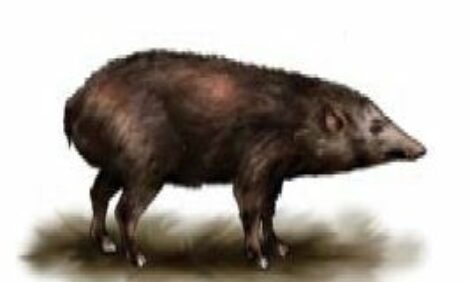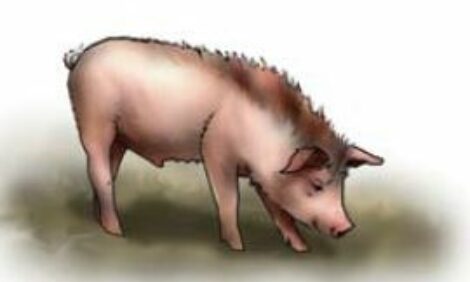



Red Wattle
The Red Wattle hog, or Red Wattle pig, is a breed of domestic pig originating in the United States. It is named for its red colour and distinctive wattles, and is on the threatened list of the American Livestock Breeds Conservancy (ALBC). The Red Wattle comes in a variety of shades of red, some with black specks or patches, and red and black hair. Some individuals are nearly black. The head and jowl are clean and lean, the nose is slim, and ears are upright with drooping tips.
They typically weigh 600–800 pounds (270–360 kg). Large specimens can reach 1,200 pounds (540 kg) in weight, 4 feet (120 cm) in height and 8 feet (240 cm) in length. The sows are excellent mothers, farrow litters of 10 – 15 piglets, and provide good quantities of milk for their large litters. They have a mild temperament and are able to adapt to a wide range of climates. Their active foraging makes them a good choice for consideration in outdoor or pasture-based production. Their gentle nature recommends them to the small-scale, independent producer, though they are suitable for extensive management as well.
The early history of the Red Wattle hog is not clear. The modern breed descends from animals found in East Texas in the late 1960s and early 1970s by H. C. Wengler, who cross-bred two wattled red sows with a Duroc boar to start the "Wengler Red Waddle" line. Other animals were found, also in East Texas, about 20 years later by Robert Prentice, and became the Timberline line of Red Wattles. Prentice also crossed his Timberlines with Wengler's line to make the Endow Farm Wattle Hogs. In the 1980s three breed registries were maintained, but there was no central breed association. In 1999 the American Livestock Breeds Conservancy found only 42 breeding animals belonging to six breeders. A Red Wattle Hog Association was started, which since September 2012 has maintained the pedigree book for the breed.








